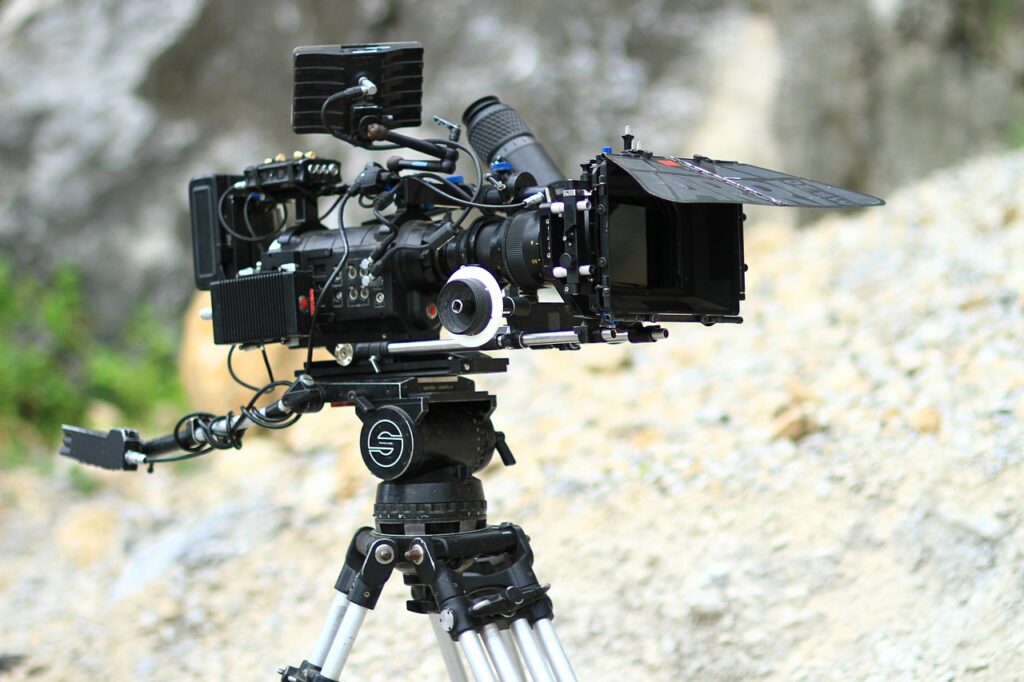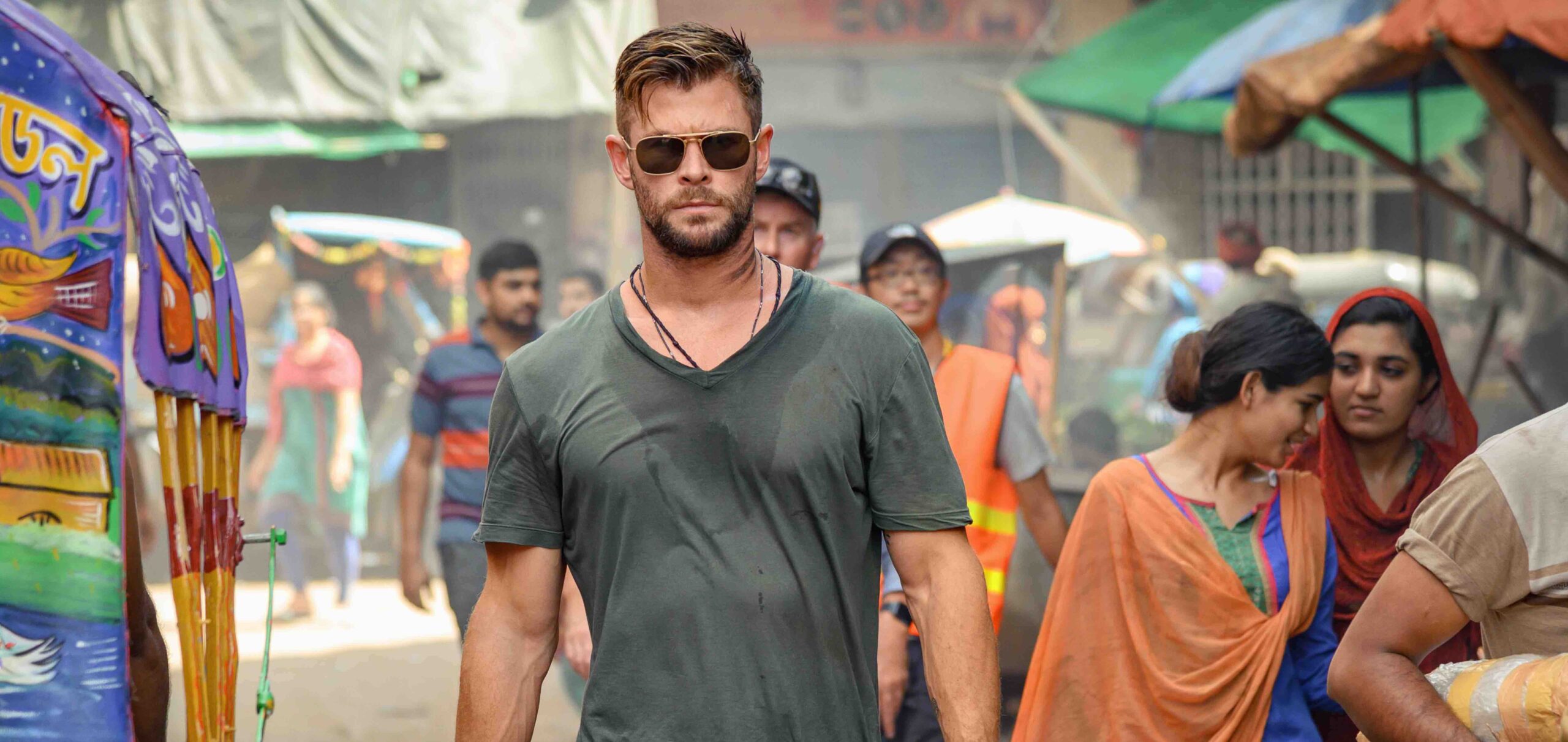
Table of Contents
ToggleIntroduction
Let’s delve into the depths of the filmmaking process. Thus, our journey begins from here.
Lights, camera, action! Have you ever wondered how your favorite movies come to life? The magic of movie making isn’t just about the stars on screen—it’s a captivating journey filled with passion, creativity, and countless behind-the-scenes steps.
In this article, we’ll take you behind the curtain and explore the fascinating process of making a movie, from initial concept to the big premiere. Get ready to uncover the secrets of the silver screen and gain a new appreciation for the artistry that goes into every film. So, grab a seat and let’s dive into the world of movie making!
Film Making Process:
The filmmaking process starts from the pre-production phase and ends with post-release. Let’s discover all the phases briefly. I hope you will enjoy this journey.
1. Pre-Production Phase:
The first phase of filmmaking process starts with Pre-production Phase. The pre-production phase marks the exhilarating starting point where dreams take shape and visions begin to materialize. This pivotal stage in the filmmaking process lays the groundwork, setting the stage for the magic that’s yet to come.
- Conceptualization: It all begins with a spark—an idea that captures the imagination and sets the wheels in motion. Whether it’s a gripping storyline, a compelling character, or a thought-provoking theme, this is where the seeds of creativity are planted.
- Planning and Preparation: With the concept in hand, it’s time to roll up the sleeves and get down to business. Budgets are drafted, resources are allocated, and timelines are set. Every detail, from casting decisions to location scouting, is carefully considered as the pieces of the puzzle start to come together.
- Script Development: The script is the backbone of any film, and in the pre-production phase, it undergoes intense scrutiny and refinement. Writers collaborate with directors and producers to flesh out characters, fine-tune dialogue, and ensure that every scene serves the overarching vision of the project.
- Casting: With the script finalized, attention turns to assembling the perfect ensemble cast. Auditions are held, callbacks are made, and tough decisions are agonized over as filmmakers strive to find the ideal actors to bring their characters to life.
- Crew Hiring and Logistics: Behind every great film is a dedicated team of professionals working tirelessly behind the scenes. From cinematographers to costume designers, set builders to sound engineers, the pre-production phase is where these essential players are recruited and preparations are made to ensure smooth sailing once production begins.
- Location Scouting and Set Design: The world of the film begins to take shape as locations are scouted and sets are designed. Whether it’s a bustling city street, a picturesque countryside, or an otherworldly realm, every location is carefully chosen to enhance the storytelling experience.
- Legalities and Paperwork: Last but certainly not least, the pre-production phase involves navigating the maze of legalities and paperwork that come with making a film. Permits must be obtained, contracts must be signed, and insurance policies must be secured to protect the production from any unforeseen complications.
In essence, the pre-production phase is the foundation upon which the entire filmmaking process rests. It’s a time of boundless creativity, meticulous planning, and unwavering determination—a time when dreams are set in motion and anything is possible.
2. Production Phase:

Lights, camera, action! Welcome to the heart of the filmmaking process—the exhilarating production phase where scripts leap off the page and onto the screen, where actors embody characters, and where the magic truly comes to life.
- Setting the Stage: With pre-production complete, production kicks off with the setup of sets, lighting, and camera equipment. Every detail is meticulously arranged to create the perfect backdrop for the unfolding story.
- Directing and Filming: Under the guidance of the director, the cast and crew come together to breathe life into the script. Scenes are rehearsed, camera angles are perfected, and takes are captured until the desired emotion and authenticity are achieved.
- Capturing the Moments: From dramatic confrontations to tender embraces, the production phase is all about capturing the raw emotion and nuance of each moment. Actors deliver their lines with conviction, while the camera frames each shot with precision, ensuring that every frame is a work of art.
- Managing Logistics: Behind the scenes, a well-oiled machine is hard at work, managing the logistics of the production. From coordinating schedules to ensuring the safety of cast and crew, production managers and assistants keep everything running smoothly, allowing the creative vision to take center stage.
- Problem-Solving on the Fly: Despite meticulous planning, challenges inevitably arise during production. Whether it’s inclement weather, technical glitches, or unexpected changes to the script, the production team must think quickly on their feet to find solutions and keep the momentum going.
- Collaboration and Creativity: The production phase is a true testament to the power of collaboration and creativity. From the director to the cinematographer, from the actors to the production assistants, each member of the team brings their own unique perspective and talent to the table, contributing to the magic of the final product.
- Wrapping Up: As the final scenes are filmed and the last shots are captured, there’s a sense of accomplishment and camaraderie on set. Cast and crew come together to celebrate the completion of filming, knowing that they’ve played a part in bringing something special to life.
In essence, the production phase is where the vision of the film truly takes shape. It’s a time of intense creativity, collaboration, and hard work—a time when the magic of cinema is brought to life one frame at a time.
3. Post-Production Phase:
Lights dim, cameras stop rolling, but the journey of the filmmaking process is far from over. Welcome to the captivating realm of post-production—the phase where raw footage transforms into cinematic gold through the meticulous hands of editors, sound designers, and visual effects wizards.
- Crafting the Narrative: In the post-production phase of the filmmaking process, editors sift through mountains of footage, piecing together the puzzle of the story with surgical precision. Each cut, each transition, is carefully chosen to evoke emotion and propel the narrative forward, ensuring that every frame serves the greater vision of the film.
- Enhancing Visuals: While the cameras may have stopped rolling, the visual journey is far from complete. Visual effects artists work their magic, seamlessly blending practical footage with digital wizardry to create stunning visuals that transport audiences to other worlds and ignite the imagination.
- Fine-Tuning Sound: Sound is the unsung hero of the filmmaking process, heightening emotions, setting the mood, and immersing viewers in the world of the film. Sound designers meticulously craft every sound—from the rustle of leaves to the roar of an explosion—to create an auditory experience that is as immersive as it is unforgettable.
- Color Grading: Like a painter with a blank canvas, colorists breathe life into the film, enhancing contrast, adjusting hues, and creating a visual palette that sets the tone for the entire story. Through the art of color grading, filmmakers can evoke mood, enhance storytelling, and transport audiences to distant lands with a single stroke of the brush.
- Music and Score: No film is complete without its soundtrack—a symphony of melodies and motifs that elevate the emotion and amplify the drama. Composers work hand in hand with filmmakers to create a musical tapestry that complements the visuals, heightening the impact of every scene and leaving a lasting impression on audiences.
- Quality Assurance: In the final stages of post-production, meticulous attention is paid to every detail, ensuring that the film meets the highest standards of quality and craftsmanship. From audio levels to visual effects, every aspect of the film is scrutinized to ensure a seamless viewing experience for audiences.
- Delivering the Final Product: With post-production complete, the final step in the filmmaking process is to deliver the finished product to audiences around the world. Whether it’s through theatrical release, streaming platforms, or film festivals, filmmakers share their passion and creativity with the world, inviting audiences to join them on an unforgettable journey through the magic of cinema.
In essence, the post-production phase of the filmmaking process is where the true artistry of cinema comes to life. It’s a time of creativity, collaboration, and meticulous attention to detail—a time when raw footage is transformed into a masterpiece that will captivate audiences for generations to come.
4. Distribution and Marketing:
Lights, camera, promotion! As the final frames of the filmmaking process come together, a new chapter begins—one where the finished product is shared with audiences around the globe. Welcome to the dynamic world of distribution and marketing, where storytelling meets strategy to bring cinematic masterpieces to the masses.
- Choosing Distribution Channels: With the film in the can, the first order of business is deciding how to get it into the hands of eager viewers. From traditional theatrical releases to streaming platforms and video-on-demand services, filmmakers must carefully consider which distribution channels will best reach their target audience and maximize their reach.
- Negotiating Distribution Deals: Distribution deals can make or break a film’s success, and negotiating the terms requires a delicate balance of art and business savvy. Filmmakers must navigate contracts, licensing agreements, and revenue-sharing arrangements to ensure that their work receives the exposure it deserves while also protecting their creative vision and financial interests.
- Creating a Buzz: In the crowded landscape of modern entertainment, cutting through the noise requires more than just a great film—it requires a strategic marketing campaign that captures the imagination and sparks curiosity. From teaser trailers to social media promotions, filmmakers must leverage every available tool to generate buzz and build anticipation for their project.
- Engaging with Audiences: In today’s digital age, audiences crave authenticity and connection, and filmmakers have an unprecedented opportunity to engage directly with their fans. Through social media, live Q&A sessions, and behind-the-scenes content, filmmakers can forge meaningful relationships with their audience, turning casual viewers into loyal fans and ambassadors for their work.
- Press Junkets and Media Appearances: As the release date approaches, filmmakers hit the press circuit, engaging in interviews, press junkets, and media appearances to drum up excitement and generate media coverage for their film. These opportunities not only raise awareness but also provide a platform for filmmakers to share their passion and insights with the world.
- Premiere Events and Screenings: The culmination of months or even years of hard work, premiere events and screenings are a chance for filmmakers to celebrate their achievements and share their work with the world. Whether it’s a star-studded red carpet affair or an intimate screening for industry insiders, these events create a sense of excitement and anticipation that can propel a film to success.
- Launching the Film: Finally, the moment arrives to unleash the film upon the world. Whether it’s a theatrical release, a digital launch, or a combination of both, filmmakers watch with bated breath as their creation takes its first steps into the spotlight, ready to be embraced by audiences and critics alike.
In essence, the distribution and marketing phase of the filmmaking process is where the magic of cinema meets the realities of the marketplace. It’s a time of strategic planning, creative innovation, and tireless promotion—a time when filmmakers must not only share their vision with the world but also ensure that it finds its rightful place in the hearts and minds of audiences everywhere.
5. Post-Release:
Lights fade, applause echoes, and the curtain falls on the culmination of months or even years of dedication—the post-release phase of the filmmaking process begins. As the dust settles and the reviews pour in, filmmakers embark on a new chapter, one filled with reflection, celebration, and anticipation of what lies ahead.
- Assessing Box Office Performance: The post-release phase kicks off with a close examination of the film’s box office performance. Filmmakers analyze ticket sales, audience demographics, and critical reception to gauge the success of their project and identify areas for improvement in future endeavors.
- Reflecting on Audience Feedback: One of the most valuable aspects of the post-release phase is the opportunity to hear directly from audiences. Filmmakers sift through reviews, social media commentary, and audience surveys, absorbing feedback and insights that can inform their future filmmaking process and enhance their connection with viewers.
- Navigating Awards and Recognition: For many filmmakers, the post-release phase brings the thrill of awards season—a time when their work is recognized and celebrated by peers and industry insiders alike. Whether it’s nominations for prestigious awards or wins at film festivals, these accolades serve as validation of their talent and dedication to the filmmaking process.
- Reflecting on the Film’s Legacy: As the initial excitement of release fades, filmmakers take a step back to reflect on the broader impact of their work. They consider how their film fits into the larger cultural landscape, its influence on audiences and future generations, and the lessons learned that will shape their approach to the filmmaking process moving forward.
- Engaging with Fans and Critics: Even after the credits roll, the conversation surrounding a film continues. Filmmakers engage with fans and critics through interviews, panel discussions, and social media interactions, fostering a sense of community and dialogue that extends beyond the theater walls.
- Planning for the Future: Armed with insights from the post-release phase, filmmakers begin to chart their course for the future. They identify new projects, explore collaborations, and refine their approach to the filmmaking process based on the lessons learned from their latest endeavor.
- Celebrating Achievements: Last but certainly not least, the post-release phase is a time for celebration. Filmmakers come together with cast, crew, and supporters to toast to their achievements, celebrate their hard work, and cherish the memories created throughout the filmmaking process.
In essence, the post-release phase of the filmmaking process is a time of reflection, celebration, and anticipation. It’s a chance for filmmakers to pause, take stock of their accomplishments, and set their sights on the next chapter of their cinematic journey.
Conclusion
Lights dim, the final scene fades to black, and the credits roll—the filmmaking process reaches its crescendo, but the journey is far from over. As we bid farewell to the captivating world of cinema, we’re left with a profound appreciation for the artistry, dedication, and sheer magic that brought our favorite films to life.
Through every step of the filmmaking process, from the initial spark of inspiration to the exhilarating premiere and beyond, we’ve witnessed the power of storytelling to captivate hearts, inspire minds, and transcend boundaries. Each frame, each line of dialogue, is a testament to the boundless creativity and unwavering passion of the filmmakers who brought their vision to the screen.
But the filmmaking process is more than just a series of steps—it’s a journey of discovery, collaboration, and self-expression. It’s a testament to the human spirit and our innate desire to connect, to share our stories with the world and leave a lasting legacy for generations to come.
As we reflect on the countless hours of hard work, the moments of inspiration, and the challenges overcome, we’re reminded that filmmaking is not just a profession—it’s a calling, a vocation that demands our full dedication and unwavering commitment.
So, as we say goodbye to the world of lights, camera, action, let us carry with us the lessons learned, the memories made, and the friendships forged along the way. And let us continue to celebrate the magic of the filmmaking process, honoring its rich history, embracing its limitless potential, and nurturing the next generation of storytellers who will carry the torch forward into the future.
In the end, the filmmaking process is not just about making movies—it’s about making dreams come true, one frame at a time.



